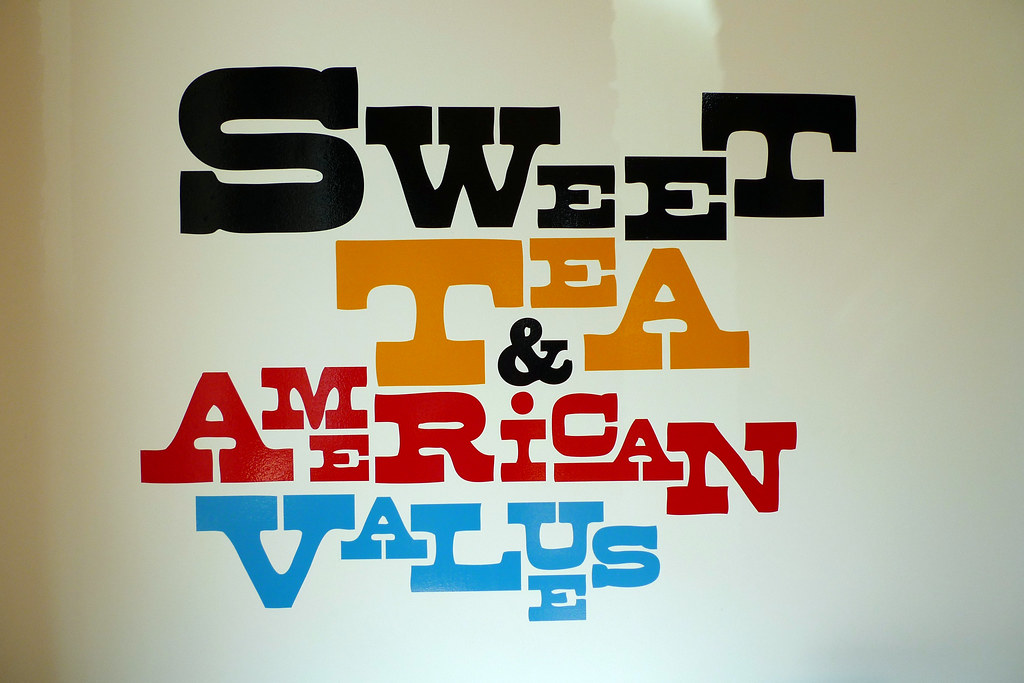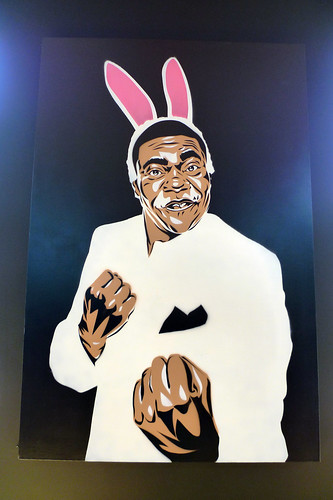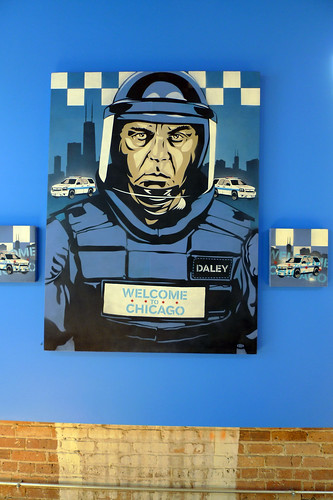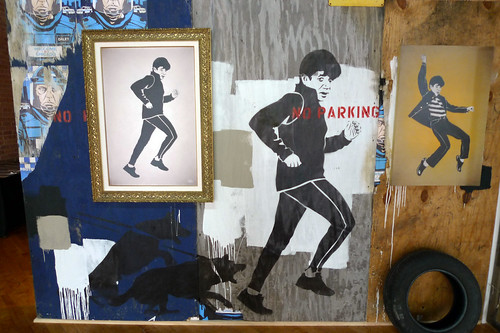Title wall for the exhibit, really lovely type. Via Proximity Mag's Flickr.
--------------------------------------------------
Noland’s work is unabashedly political. He skewers celebrities, musicians, politicians and assumptions about race and gender, all with equal abandon. It’s clear that Noland was working through a lot of ideas for “Sweet Tea,” riffing on old imagery, alongside new works created with the CUAS space in mind. According to the artist, almost three-quarters of the work is new (the rest is comprised of his Obama posters and the iconic “Go Tell Mama” series). With the flexibility and sense of experimentation that portends a good future for CUAS, the directors gave Noland the opportunity to work (and occasionally sleep) in the gallery for a month prior to the opening.
Unfortunately, in “Sweet Tea,” Noland’s attempt to bring the street indoors falls flat. While the installations are charming, the handful of plywood walls, plastered with faux “weathered” posters and Noland’s signature guilty, childlike Blagos, are an ineffectual spatial experiment. Bringing Blagojevich indoors also seems unnatural; that tell-tale, hand-in-the-cookie-jar expression is most powerful when it’s unexpectedly stumbled across outside. Seen outdoors, we can picture the real Blagojevich infamously jogging (or on the lam), but indoors Blago is just running in circles, and has nowhere to go. There is simply not enough of Noland’s art to fill the huge gallery space, and the street-art atmosphere seems token when paired with Noland’s more traditionally displayed works on canvas.

What works best in the space are the bold, singular, graphic works—the intricately stenciled portraits on canvas, rich with layers of flat color, and the tongue-in-cheek advertisements for No-Race Creme. Noland’s background in design is evident, for his strength lies in icons, particularly the larger-than-life portraits addressing masculinity and race. Most iconic of all is the mural for No-Race Creme, which is placed on the large back wall, and commands the room with the image of a manicured hand of a woman smearing red, white and blue makeup across her cheek.
Ironically, as you exit the CUAS space, a huge billboard is visible, looming over South Halsted Street. In a real-world juxtaposition of the show’s title, the bright red advertisement is for Coca-Cola and McDonald’s new sweet-tea drink. It’s a missed opportunity for some of Noland’s wry public defacement, or perhaps just a pertinent echo of the issues Noland addresses: the relationships between commercialism, race and people with too much power. (Julia V. Hendrickson)
The Chicago Urban Art Society is at 2229 South Halsted. “Sweet Tea” is open through July 30.
[Published in Newcity, online here, and in print, June 2010].
--------------------------------------------------
Ray Noland's Flickr album of the show is here, and his website is CRO (Creative Rescue Organization).Chicago's NPR (WBEZ, 91.5) had an interview with Noland this morning. You can listen to it here.
Proximity Magazine also has some good photographs of the exhibit here (shown below).








No comments:
Post a Comment